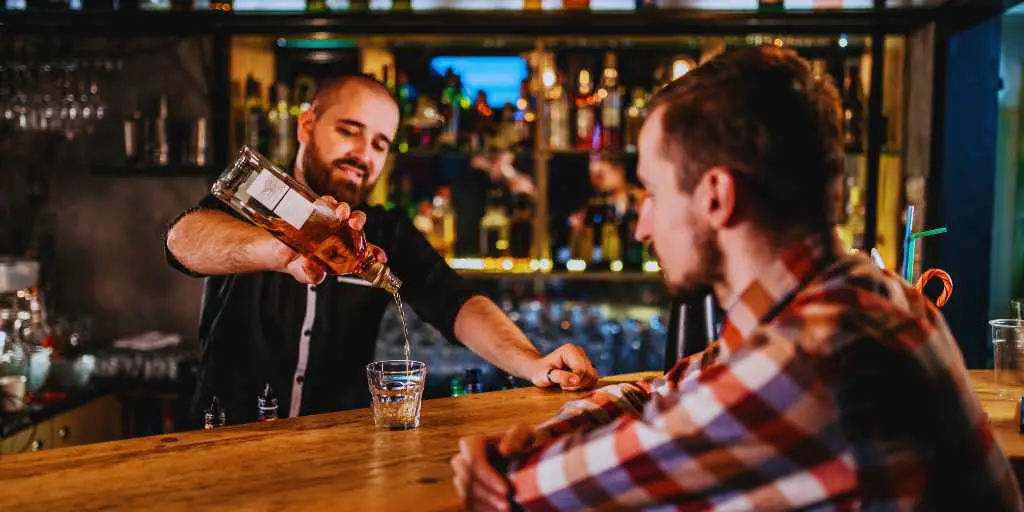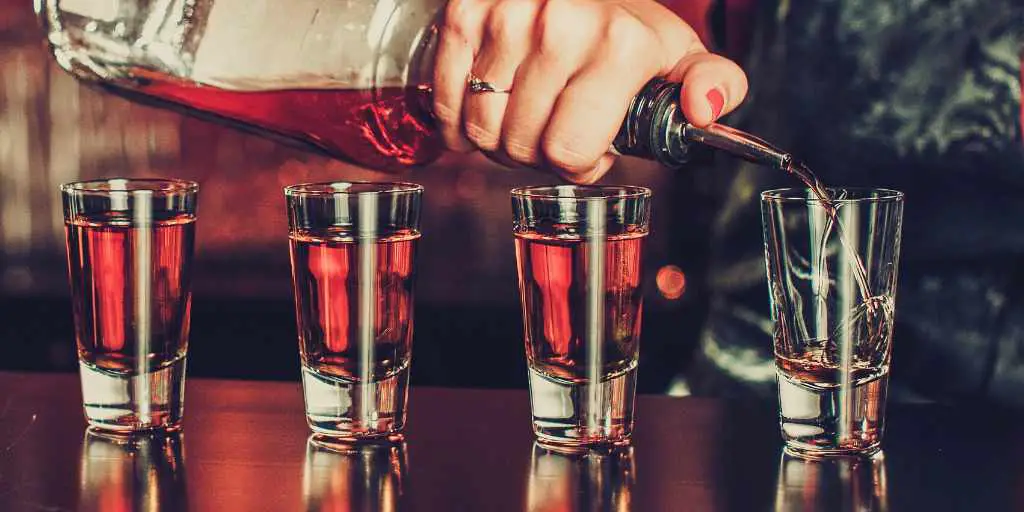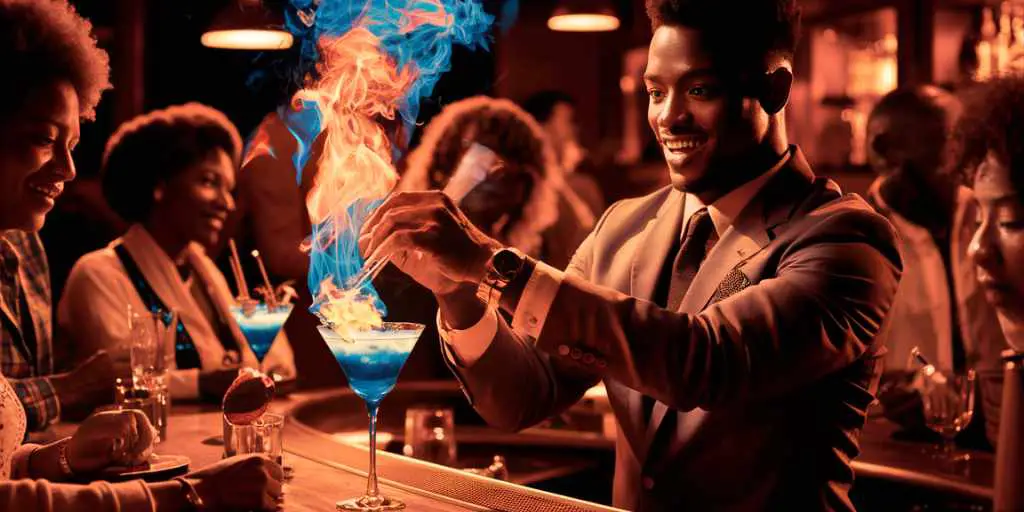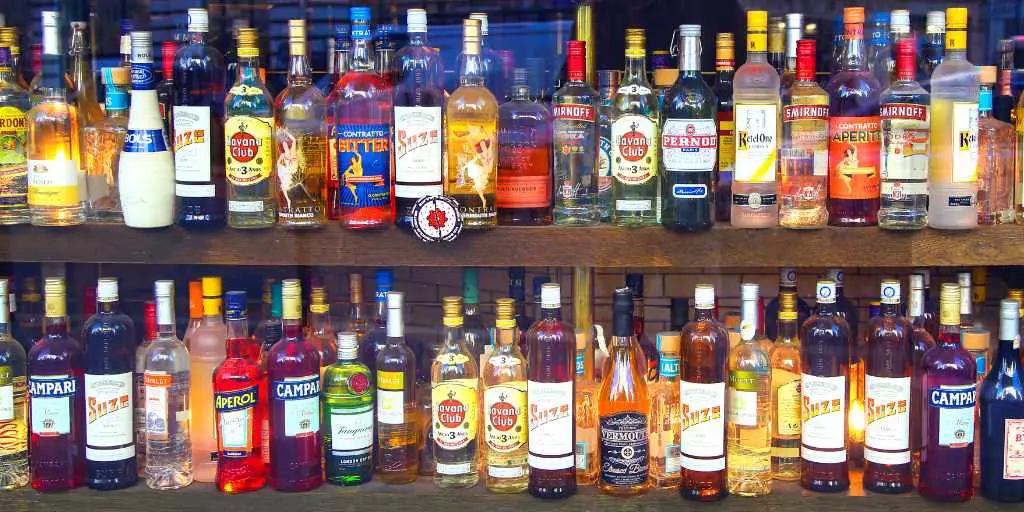When considering the role of a bartender, a common question arises: how many drinks can they responsibly serve to one person? The answer is not fixed, as it depends mainly on factors like jurisdictional laws, the establishment’s policies, and the bartender’s discretion based on their patron assessment.
Legally, bartenders must adhere to regulations that limit serving alcohol to individuals who are visibly intoxicated or under the legal drinking age. Moreover, different states may have varying blood alcohol concentration (BAC) thresholds, which bartenders need to be aware of to avoid serving drinks that could lead patrons to exceed these limits.
Key Takeaways
- Bartenders are guided by legal and operational measures regarding the number of drinks served to an individual.
- Monitoring and serving discretion play crucial roles in responsible alcohol service.
- Responsible serving by bartenders is essential for customer safety and societal well-being.
Legal and Safety Responsibilities in Bartending
In bartending, legal compliance and safety are, of course, paramount. Bartenders and establishments must understand and adhere to the various laws and guidelines to ensure the welfare of their customers and avoid legal repercussions.
Understanding Local and State Laws
Each state has its own set of regulations concerning alcohol service. Establishments must know their state’s legal limits on alcohol sales and the local laws that may impose stricter requirements. For instance, serving hours and age limits can vary, and fines for violations can be substantial. Staff should be trained to be familiar with these laws to maintain compliance and customer safety.
Identifying Intoxication and Refusing Service
Bartenders should be skilled in recognizing the signs of intoxication among heavy drinkers. Signs may include slurred speech, impaired coordination, or aggressive behaviour. It is within a bartender’s legal duty to refuse service to intoxicated customers to prevent harm and drunk driving incidents.
Legal Liability and Over-Serving Penalties
When a customer is over-served, both the bartender and the establishment could face liability for any damages or injuries that occur from drinking alcohol as a result. Penalties can include fines, potential loss of liquor license, and even criminal charges in cases of severe negligence.
Promoting Responsible Alcohol Consumption
Beyond legal obligations, the industry recognizes the need to promote responsible drinking habits. Initiatives like offering water or non-alcoholic drink options and educating customers on the risks of excessive alcohol consumption are part of this commitment.
Training and Knowledge for Establishments
Comprehensive staff training ensures they possess the judgment and knowledge necessary for responsible guest service. Such training often includes measuring drink servings, legal responsibilities, and methods to handle various situations safely.
Minimizing Harm and Ensuring Customer Safety
The overarching goal of adhering to legal and safety responsibilities in bartending is to minimize harm caused and ensure the safety of all patrons. This requires constant vigilance, appropriate responses to signs of intoxication, and a commitment to responsible practices within the establishment.
Serving Guidelines and Customer Interactions
To ensure patrons’ safety and satisfaction, bartenders must navigate complex regulations while providing excellent customer service. This section examines the delicate balance between serving alcohol responsibly and maintaining a hospitable environment.
Determining Drink Limits Per Customer
Bartenders must establish clear drink limits per customer, commonly guided by legal standards and the establishment’s policies. For example, one drink guideline suggests that moderate drinking is defined as one drink per day for women and two drinks per day for men. Each drink is quantified as either 12 ounces of beer, 5 ounces of wine, or 1.5 ounces of distilled spirits.
Recognizing Factors Impacting Intoxication
Staff should assess various factors impacting a patron’s intoxication level, such as body weight, gender, tolerance level, and the type of drink consumed. A customer’s tolerance can be affected by the percentage and amount of alcohol by volume in their drinks and is compounded by their characteristics and the consumption rate.
Managing Visibly Intoxicated Patrons
When patrons become visibly intoxicated, bartenders must intervene appropriately. In many states, serving additional drinks to an intoxicated person is illegal, and staff must be trained to notice signs of excessive alcohol consumption and react accordingly to prevent potential incidents or involvement with law enforcement.
Balancing Customer Service with Compliance
A challenge for bartenders is to balance eager customer service with strict compliance to serving laws. This entails politely refusing service when necessary and providing alternative options such as non-alcoholic drinks or calling a taxi for intoxicated customers, all while preserving a positive experience. Compliance is not just about following the law but about ensuring customer safety and preventing harm.
Operational Strategies for Responsible Serving
Ensuring responsible alcohol service is a multifaceted business approach that involves clear policies, a safe environment, and alternative options for patrons. Establishing these strategies is crucial for the safety of guests and staff alike, complying with legal requirements, and fostering a secure and enjoyable dining or bar-going experience.
Implementing Effective Policies and Procedures
Establishments should have comprehensive policies on responsible alcohol serving that staff are trained to follow. These policies often outline the method for checking identification to verify age and the steps to take when dealing with intoxicated guests. Training for employees must include recognizing signs of inebriation and knowing how to refuse service diplomatically. Standard drink measurements and keeping track of how much and how fast patrons are consuming, especially for those serving beer and wine, are vital policies to have in place.
Enhancing Safety Through Design and Equipment
The physical design of an establishment and the equipment used can significantly enhance safety and responsible serving efforts. Bars may be arranged to allow bartenders clear views of patrons to monitor consumption and behaviour. Using specialized glassware with pour lines can aid in serving a defined standard drink size. Furthermore, incorporating quick access to non-alcoholic beverages and water can help staff offer alternatives seamlessly.
Offering Alternatives to Alcoholic Beverages
Providing options such as non-alcoholic beverages, mocktails, and water caters to non-drinkers and helps moderate alcohol intake for those who do. Bartenders and servers at restaurants can play an active role by suggesting these alternatives, especially if patrons are approaching responsible consumption limits. Offering “drink specials” or promotions on non-alcoholic beverages can incentivize patrons to make safer consumption choices.
Impact on Society and Prevention Efforts
Excessive alcohol consumption poses significant risks to society, including drunk driving accidents and public health concerns. Addressing these issues requires a multifaceted approach involving responsible service from bartenders, comprehensive education, and prevention efforts.
Addressing Drunk Driving and Public Health
Drunk driving remains a leading cause of mortality and morbidity, with intoxicated drivers posing a substantial risk to public health. Public health campaigns and legal measures aim to mitigate these risks by promoting safe drinking habits and highlighting the consequences of drunk driving. Interlocking devices and increased patrols are practical steps to reduce drunk driving accidents.
Role of Bartenders in Preventing Alcohol Abuse
Bartenders have a critical role in preventing alcohol abuse and overconsumption. They are often on the front lines and can identify signs of intoxication, intervening when necessary. Key practices include:
- Refusing service to intoxicated patrons
- Offering non-alcoholic alternatives
- Monitoring the alcohol consumption of guests
The Importance of Education in Mitigating Risks
Education is a cornerstone in reducing excessive drinking and associated risks. Training programs for bartenders focus on responsible alcohol service, understanding alcohol content, and learning to spot early signs of intoxication. Public education campaigns also help inform individuals about the dangers of excessive alcohol consumption, aiming to foster a culture of moderation.

Frequently Asked Questions
In this section, readers will find detailed answers to commonly asked questions about the limits and regulations a bartender must adhere to when serving alcohol.
What is the legal limit for serving alcohol to an individual in a bar or restaurant?
The legal limit for serving and selling alcohol varies by jurisdiction but typically revolves around serving alcohol responsibly to prevent intoxication. It’s essential to check local laws for specific limits around letting customers safely consume alcohol.
How Much Alcohol Is “Too Much” According To The Law In Texas?
In Texas, intoxication is often legally defined as not having the normal use of mental or physical faculties because of the introduction of alcohol, a controlled substance, or a drug.
Can patrons at a bar legally order multiple drinks at once, and if so, what’s the limit?
Patrons can order multiple drinks simultaneously, although limits can be set by the establishment’s policy or local regulations, often to discourage binge drinking.
What guidelines must bars follow when selling takeout alcohol quantities in terms of ounces?
Several states have specific regulations on takeout alcohol, which might include limits on the quantities in ounces that can be sold, usually aligned with sealed container laws.
How Many Drinks Can A Bartender Serve In One Hour?
The maximum number of drinks a bartender can serve in one hour will depend on various factors, including state laws, establishment policies and customer behaviour, with a focus on responsible service.
For instance, in Utah or Massachusetts, you can’t have more than two drinks at once (source).
In the context of alcohol service laws, how does the ’50 rule’ apply to bartending?
The 50 rule in bartending refers to not serving a customer another drink until they’ve finished half their current drink.
It’s not a universally recognized term in bartending, and regulations do not typically reference such a rule regarding alcohol service laws.
Is there a legal requirement to include food with alcoholic drink orders for delivery or takeout?
Some jurisdictions require alcoholic orders for delivery or takeout to include food, while others may not. It’s important to verify local statutes for specific requirements.
What is a bartender’s typical capacity for serving individual customers during a busy shift?
The capacity for a bartender to serve alcohol to customers will vary greatly depending on the establishment, staffing, and efficiency of the bartender’s workflow.
How To Know When It’s Time To Stop Serving Someone
Bartenders should stop serving alcohol to patrons who exhibit clear signs of intoxication or impaired judgment, as per responsible service guidelines, before serious issues like alcohol poisoning can start to occur.
Who Can Bring a Claim Against a Bar in Texas?
In Texas, claims against a bar, under the Dram Shop Act, can be brought by individuals who were injured by an intoxicated person or by the intoxicated person themselves if service was provided while they were obviously impaired.
Can a Bartender Refuse To Serve Someone?
Yes, a bartender, the owner or the manager can refuse service to anyone for any reason as long as the reason isn’t related to a protected status (race, ethnicity, gender, etc.) or age if the customer is not underage. Further, a bartender is legally required to cut off customers who are showing signs of intoxication or other signs of having had too much to drink.




